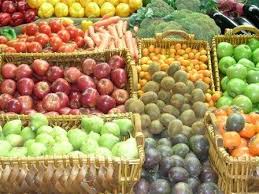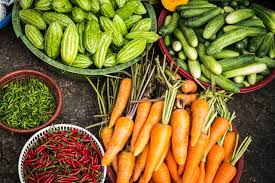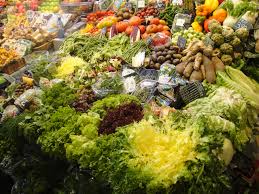Price is the regulator of the economic system because it influences the prices paid for all factors of production and the allocation of these factors. It influences the wages paid to workers, the rent a firm pays, and the profit a firm makes.
The market demand of an item is dependent on the price of the product. The price of a product also affects the marketing program of a firm.
Price Decisions and Determination in Agribusiness

According to Stanton (1981), price can be defined as the amount of money (plus possibly some goods) which is needed to acquire, in exchange for some combined assortment of a product and its accompanying services. Succinctly, price is the exchange value of a product.
Agribusiness pricing is determined in two ways:
i. Price impacts revenue as a component of the revenue (R) equation (R = price × quantity sold).
ii. Price affects quantity sold, by influencing the demand relationships for the product or service.
These two situations can give rise to complications: lower prices produce less income per unit sold, but usually generate an increase in quantity sold (sales volume).
Consequently, increased sales mean that fixed costs are spread over more units; therefore, per-unit costs may be reduced, at least to a point. The net result is that pricing decisions become a real challenge to agribusiness managers.
Methods of Price Determination in Agribusiness

A firm may determine the price of its product in several ways:
i. Cost pricing: Cost-based pricing, or cost-plus pricing, is a simple way of determining price by adding a constant margin to the basic cost of the product or service.
This margin is intended to cover overhead and marketing or handling costs and leave a profit. This method of price determination is common, especially for the retailing of large numbers of products.
ii. ROI pricing: ROI pricing is similar to cost-plus pricing, as it also begins with the product price, but rather than adding fixed or overhead costs, this method adds an amount sufficient to earn a specified ROI.
For example, an agribusiness firm calculates how much profit will be needed to earn a 10 percent ROI. Then, assuming a reasonable sales volume, it estimates costs and calculates the total revenue that must be generated. Finally, the total revenue is divided by the estimated sales to suggest the necessary percentage that the product must be marked up.
iii. Competitive pricing: Competitive pricing method bases price on competitors’ prices. This method simply sets the price at the “going rate,” according to some general or common average, or follows the lead of a competitor. In this method, the price must not always be the same as competitors’ prices; a price may be strategically held above or below that of competitors.
iv. CTO pricing: This is a method that encourages extra sales by selling additional products above and beyond sales projections at some price slightly greater than the additional out-of-pocket costs of handling the product. This method of pricing is also called marginal-cost pricing; it ignores the fair share of the overhead cost that could be borne by the additional product.
v. Penetration pricing: This pricing strategy consists of offering a product at a low price in order to get a great deal of exposure to gain wide acceptance speedily. These strategies are mostly used to introduce new products into a market, particularly price-responsive products that must sell in large volume to reduce costs.
After the necessary acceptance by consumers, the price of such a product may be gradually raised to a more profitable level.
vi. Skimming the market: Skimming the market is almost the opposite of penetration pricing. Skimming involves introducing a product at a high price for more affluent customers. Then, as this relatively limited market becomes saturated, the price is gradually lowered, bringing the product within range for less affluent customers.
vii. Discount pricing: Discount pricing offers customers a reduction from the published or list price for some specified reasons. Volume discounts are common among agribusinesses. Their purpose is to encourage larger purchases, which reduce per-unit costs and promote more sales.
Price Flexibility in Agribusiness
Read Also: Factors to Consider Before Starting a Fish Farming Business

Price flexibility implies the willingness of the seller to cut prices to hold market share. Under this policy, a seller may decide whether to adopt a one-price policy or a variable price in the market.
i. One-price policy: This is when the firm charges the same price to all customers or allows the same discount. This system is commonly used in chain stores and department shops. Put differently, a one-price policy consists of offering like goods for sale at a given time at one price to all similar buyers who purchase in comparable quantities.
The advantages of this policy are that it builds customer confidence in a seller, weak bargainers need not feel they are at a competitive disadvantage, and it saves the time of the salesperson while reducing haggling.
ii. Variable price policy: This is used when a company sells similar quantities to similar buyers at different prices. Under this policy, the price is usually set as a result of bargaining. In terms of merit, the seller may want to give a buyer a better deal because the customer shows promise of becoming a large-scale buyer in the future. However, the policy generates ill will when word gets around that some buyers acquired the product at lower prices.
Cash and Quantity Discount Policies
i. Cash discounts: A deduction is granted to buyers for paying their bills within a specified period of time. A typical example would be “2/10, net 30,” which means that the payment is due within thirty days, but the buyer can deduct 2% from the cost by paying the bill within ten days.
Three elements are present in cash discounts: percentage deduction, time period of payment to be eligible for the discount, and the number of days after which the bill is overdue.
ii. Quantity discounts: A price reduction is offered to buyers who purchase larger volumes. In quantity discounts, the price will vary according to the quantity bought on the basis that transport costs, administration, and other factors are proportionally higher for smaller deliveries than for larger ones.
The advantages of quantity discounts are that they tie customers very closely to the seller, help the seller encourage customers to buy fresh supplies frequently so that merchandise does not grow stale, and help manufacturers achieve real economies in production and selling. This is because large orders can reduce the cost of production.
Price Instability in Agribusiness
Price instability implies unstable pricing. Mohammed (2015) defined price instability as the state in which prices continue to change over time and space. Fluctuations in prices are associated with varying lengths of time due to various factors. The length of fluctuation could be cyclical variations (long-term price variations), seasonal variations (short-term price variations), and random variations (irregular variations).
Variations in agricultural prices can be measured using graphical and quantitative approaches. Quantitatively, statistical tools such as range, standard deviation, and coefficient of variation are usually applicable.
Decision: The greater the coefficient of variation (CV), the greater the price instability. A CV of price above 5% implies great instability and calls for price stabilization measures. The formula above is applicable under static conditions. Price instability in the situation of a rising trend (long-term price instability index) is computed as:
I = (1 – R²) × 100,
Where I = the dynamic price instability index, R² = coefficient of multiple determination.
The calculated price index is called the dynamic price instability index because it is estimated over time.
Read Also: Introduction to Fish Nutrition
Causes of Price Instability in Agriculture

Some causes of high levels of price instability among agricultural products are:
i. Divergence in planned output and actual yield.
ii. Speculative activities of middlemen.
iii. Changes in demand and supply.
iv. Seasonality in production and marketing.
Pricing is a critical marketing decision because of its influence on revenue. Agribusiness firms’ prices differ from individual to individual, and the decision to adopt certain pricing principles is influenced by specific factors.
Do you have any questions, suggestions, or contributions? If so, please feel free to use the comment box below to share your thoughts. We also encourage you to kindly share this information with others who might benefit from it. Since we can’t reach everyone at once, we truly appreciate your help in spreading the word. Thank you so much for your support and for sharing!
Read Also: Feed and Nutrition Management for Cattle

